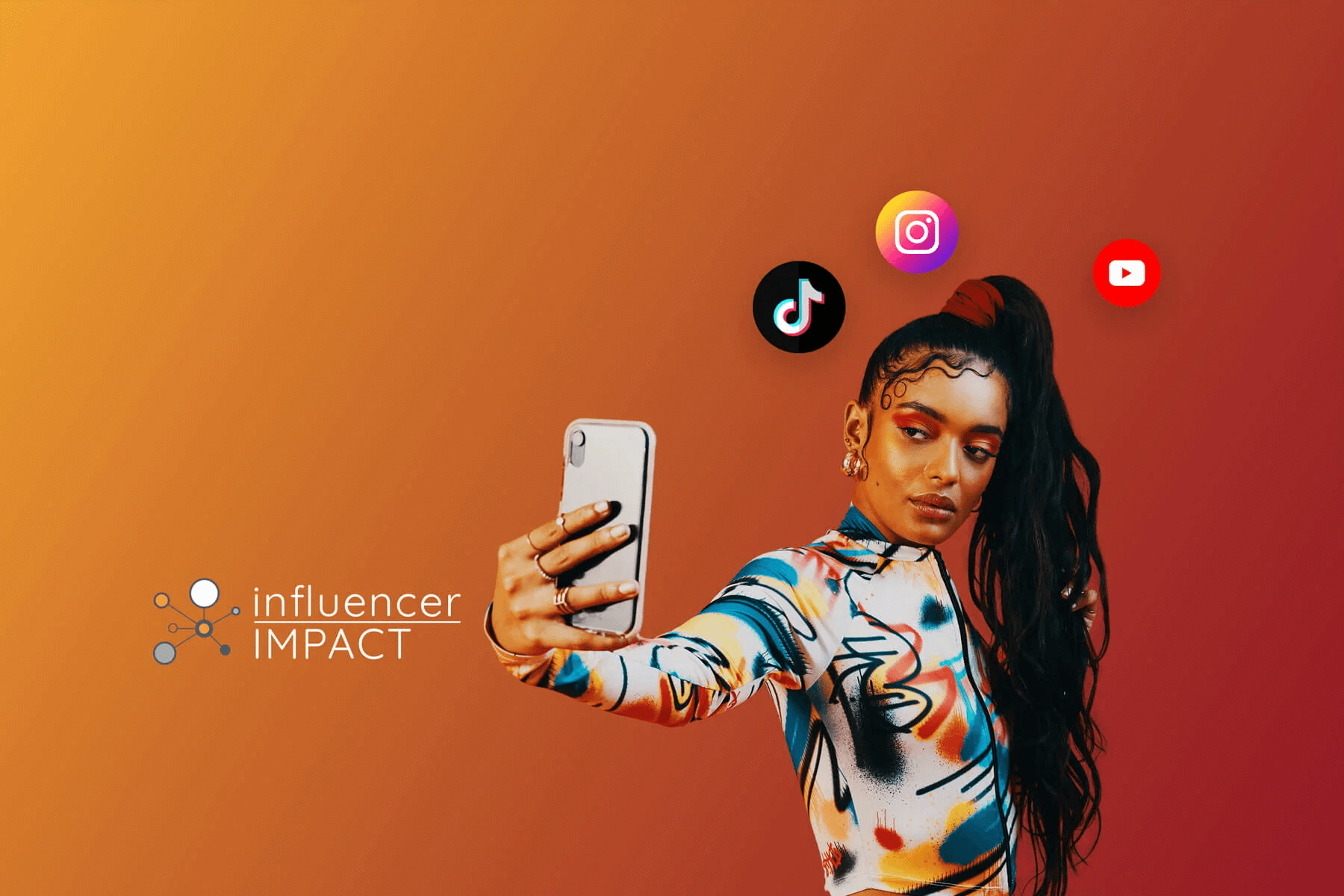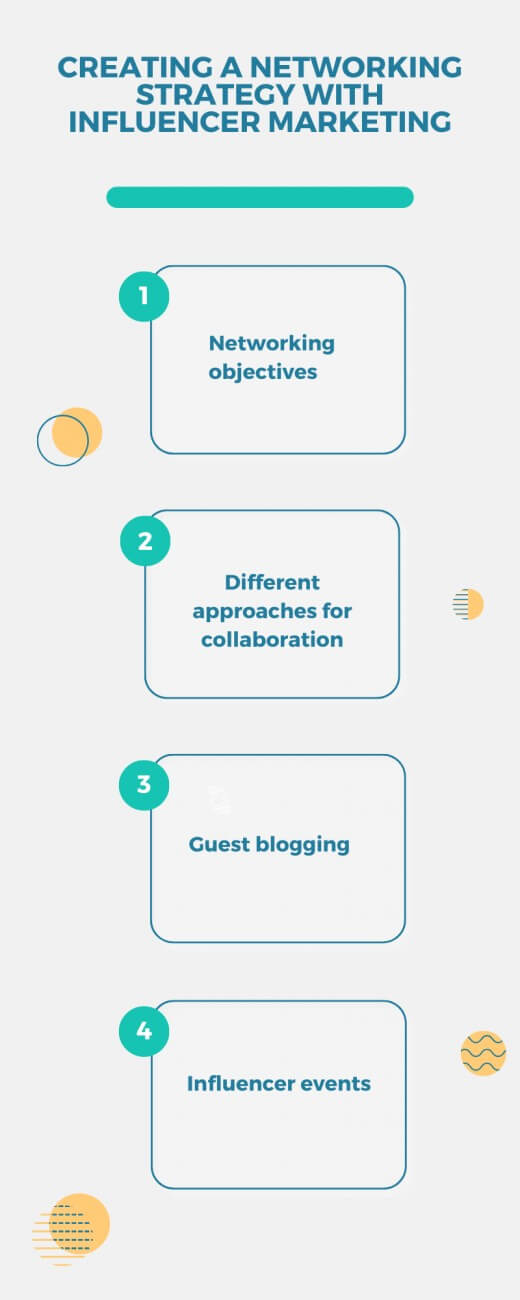How to Use Influencer Marketing for Networking?

In today’s digital era, where social media platforms have become integral parts of our lives, influencer marketing has become a powerful tool for brands to connect with their target audience.
Influencer marketing involves collaborating with individuals with a significant following and influence over their followers’ purchasing decisions. These influencers can range from celebrities and industry experts to social media content creators.
The rising importance of influencer marketing can be attributed to the changing dynamics of consumer behavior. Traditional advertising methods are no longer as effective in capturing the attention of consumers who are increasingly seeking authentic and relatable content. Influencers have the ability to create compelling and engaging content and have become trusted sources of recommendations and information.
Today’s ear, influencer marketing will continue to play a vital role in networking efforts. Networking is not limited to attending conferences and industry events anymore; it has expanded to include virtual interactions and online communities.
With their large and engaged audiences, influencers can provide excellent opportunities for brands and individuals to connect with like-minded individuals, industry professionals, and potential collaborators.
By leveraging influencer marketing for networking purposes, individuals and brands can expand their reach, increase their exposure, and build valuable connections. Influencers act as bridges between their followers and the brands they endorse, creating a sense of trust and credibility.
Influencer marketing will remain a relevant and impactful strategy for networking, enabling individuals and businesses to tap into new audiences and foster meaningful relationships.
The following sections will delve deeper into the different aspects of influencer marketing for networking and provide actionable insights and strategies to maximize the benefits of this approach.
Let’s explore how you can utilize the power of influencers to enhance your networking efforts and achieve your goals in the digital age.
Understanding Influencer Marketing In today’s Digital Landscape
Influencer marketing has become a prominent strategy for brands to connect with their target audience. But what exactly is influencer marketing? At its core, influencer marketing involves collaborating with individuals who have established credibility and a large following in a specific niche or industry.
These influencers have the power to sway their followers’ opinions, buying decisions, and behaviors. Over the years, influencer marketing has evolved significantly. Initially, it began with celebrity endorsements, where brands partnered with well-known personalities to promote their products or services.
However, as social media platforms gained popularity, a new breed of influencers emerged – social media content creators. These individuals, often called “micro-influencers,” have smaller but highly engaged audiences. Influencer marketing has gained traction due to its authenticity and relatability.
Unlike traditional advertising, influencer marketing allows brands to connect with consumers more personally and genuinely. Influencers are seen as trusted sources of information, and their recommendations hold significant weight with their followers. There are different types of influencers, each with a unique impact on marketing strategies.
Mega-influencers, with millions of followers, have a broad reach but may lack the personal connection of smaller influencers. Macro-influencers have a significant following and offer a balance between reach and engagement.
Micro-influencers, on the other hand, have a smaller but highly engaged and loyal following.
Nano-influencers have a limited number of followers but possess deep connections and influence within specific communities. Influencers’ choice depends on a brand’s specific goals and target audience.
Mega and macro-influencers are often leveraged for brand awareness and reach, while micro and nano-influencers drive engagement and foster authentic connections. Choosing the right type of influencer is crucial for crafting an effective marketing strategy and achieving desired networking outcomes.
Understanding the evolution of influencer marketing and the various types of influencers is essential for brands and individuals looking to leverage influencer marketing for networking purposes. By partnering with influencers who align with their values and target audience, they can tap into the power of influencer marketing to enhance their networking efforts and establish meaningful connections.
The Benefits of Influencer Marketing for Networking
Influencer marketing isn’t just about promoting products or services; it can also be a powerful tool for networking. By strategically leveraging influencer marketing for networking purposes, individuals and brands can unlock various benefits beyond simple brand exposure.
1. Unique Opportunity for Brand Exposure
First and foremost, influencer marketing provides a unique opportunity for brand exposure. When an influencer shares content related to a brand or collaborates on a campaign, it reaches their engaged audience who trust their recommendations.
This exposure can increase visibility, brand recognition, and awareness among a relevant and targeted audience. By aligning with influencers who share similar values or target the same niche, individuals and brands can tap into a network of potential connections and expand their reach significantly.
Using influencers for networking also allows for building valuable connections. Influencers have already established relationships with their followers, making them an excellent bridge to connect with like-minded individuals or industry professionals.
By associating with influencers, individuals and brands can position themselves within the influencer’s network, gaining access to their followers and creating opportunities for meaningful interactions. It can lead to building long-lasting relationships, collaborations, and partnerships.
2. Collaborations and Partnerships
One of the key advantages of influencer networking is the potential for collaborations and partnerships. When influencers endorse a brand or collaborate on a campaign, it opens doors for future collaboration opportunities.
By nurturing relationships with influencers, individuals and brands can unlock the potential for joint ventures, co-creating content, hosting events, or launching new products. These collaborations provide access to the influencer’s audience and tap into their expertise and creativity, resulting in mutually beneficial outcomes.
3. Beyond Traditional Networking Methods
Influencer marketing for networking goes beyond traditional networking methods. It allows individuals and brands to tap into influencer networks, access new audiences, and build connections that can significantly impact their goals.
By embracing influencer marketing for networking purposes, individuals and brands can leverage the power of influencers to gain exposure, build connections, and explore collaborative opportunities this year and beyond.
So, let’s dive deeper into the strategies and techniques for effectively utilizing influencer marketing to enhance your networking efforts.
Identifying the Right Influencers for Networking
Regarding influencer marketing for networking purposes, it’s crucial to identify influencers who align with your industry and target audience. Choosing the right influencers can make a significant difference in the success of your networking efforts, as they act as a bridge between you and your desired connections.
1. Industry Alignment
Finding influencers who align with your industry is important because they bring domain expertise and credibility to the table. Their association with your industry helps establish your credibility and ensures that their audience is relevant to your networking goals.
By partnering with influencers who deeply understand your industry, you can tap into their network and connect with individuals who share similar interests and professional backgrounds.
2. Reach and Engagement
In addition to industry alignment, certain criteria can help in selecting the right influencers. Reach, engagement, and authenticity are crucial factors to consider. Reach refers to the size of an influencer’s audience, and it determines the potential exposure your brand or message can receive.
However, it’s important to note that more than reach alone is needed to guarantee effective networking. Engagement, which includes metrics like likes, comments, and shares, indicates the influencer’s level of interaction with their audience. High engagement signifies an active and loyal following that is more likely to respond positively to your networking efforts.
3. Authenticity
Authenticity is another critical aspect to consider when selecting influencers. Authentic influencers have built trust with their followers by consistently delivering genuine and honest content. Partnering with authentic influencers ensures that your networking efforts are seen as credible and trustworthy, enhancing the likelihood of building meaningful connections with their audience.
4. Influencer Platforms
You can utilize influencer discovery tools and platforms to find the right influencers. These tools allow you to search for influencers based on various criteria, such as industry, location, audience demographics, and engagement metrics.
They provide valuable insights into an influencer’s performance, content quality, and engagement rates. By leveraging these tools, you can efficiently identify influencers who align with your networking goals and have the potential to amplify your message to the right audience.
In summary, identifying the right influencers for networking purposes is crucial for maximizing the impact of your influencer marketing efforts. By aligning with influencers who are relevant to your industry, possess a substantial reach, demonstrate high engagement levels, and exude authenticity, you can connect with individuals who are more likely to be receptive to your networking initiatives.
Utilizing influencer discovery tools and platforms can streamline the process of finding the ideal influencers for your networking goals. So, let’s move on to the next section and explore strategies for building relationships with influencers to enhance your networking efforts further.
Building Relationships with Influencers
Building relationships with influencers is crucial to leveraging influencer marketing for networking purposes. By nurturing authentic connections with influencers, individuals and brands can unlock valuable networking opportunities and establish long-lasting partnerships.
Here are some strategies to initiate contact and build strong relationships with influencers.
1. Approach Influencers
Firstly, it’s important to approach influencers in a genuine and personalized manner. Avoid generic and impersonal messages that come across as mass outreach. Take the time to research the influencer’s content, values, and recent activities.
Tailor your initial contact to reflect this knowledge, showing that you’ve taken a genuine interest in their work. Personalized outreach increases the chances of getting a response and sets the foundation for a meaningful connection.
2. Genuine Interactions
In networking, personalization and genuine interactions hold immense value. Engage with an influencer’s content by leaving thoughtful comments, sharing their posts, or mentioning them in your own content.
Demonstrating your engagement and support will capture their attention and show that you value their work. Building a genuine relationship requires consistent and authentic interactions that go beyond mere self-promotion.
3. Effective Communication
Effective communication is key to successful influencer networking. When collaborating with influencers, clearly communicate your goals, expectations, and any specific guidelines or requirements.
Be open to their input and ideas since influencers know their audience best. Establishing open and transparent communication channels fosters a sense of trust and collaboration.
4. Collaborations
Collaborations with influencers can take various forms, such as sponsored content, guest blogging, or joint events. When collaborating, ensure the partnership feels mutually beneficial and aligns with the influencer’s style and values.
By crafting collaborations that resonate with both the influencer and their audience, you’ll maximize the networking potential and create engaging content that drives meaningful connections.
Building relationships with influencers is an ongoing process. Continue to nurture connections by staying engaged with their content, supporting their initiatives, and regularly communicating.
Networking is about fostering long-term relationships, so it’s important to maintain a consistent presence and demonstrate your commitment to the influencer and their audience.
In summary, building relationships with influencers requires genuine and personalized interactions. By approaching influencers with authenticity, engaging with their content, and fostering open communication, you can establish meaningful connections that go beyond transactional partnerships.
Successful influencer networking is built on trust, collaboration, and mutual support. So, let’s move on to the next section and explore how to create a networking strategy with the power of influencer marketing in mind.
Creating a Networking Strategy with Influencer Marketing
Integrating influencer marketing into your overall networking strategy can be a game-changer when it comes to building connections and expanding your network.
By strategically leveraging influencer partnerships, you can amplify your networking efforts and achieve your goals more effectively. Here’s how to create a networking strategy with the power of influencer marketing.
1. Networking Objectives
First, identify and align your networking objectives with your influencer marketing goals. Determine the specific connections you want to make, whether it’s industry professionals, potential clients, or like-minded individuals.
By understanding your target audience and networking goals, you can find influencers who have a similar audience and can help you reach your desired connections.
2. Different Approaches for Collaboration
Next, consider different approaches for collaboration with influencers. Sponsored content is a popular method where influencers create content featuring your brand or product.
It can be in the form of reviews, tutorials, or endorsements. Sponsored content allows you to tap into the influencer’s audience and gain exposure among individuals who are already interested in your niche.
3. Guest Blogging
Another approach is guest blogging, where you collaborate with influencers to write guest posts on each other’s platforms. It exposes your content to a new audience, showcases your expertise, and builds credibility within the influencer’s community.
Guest blogging provides a valuable opportunity to connect with like-minded individuals and industry professionals who may be interested in networking with you.
4. Influencer Events
Influencer events are yet another powerful networking strategy. Hosting or co-hosting events with influencers can bring together a targeted audience of industry professionals and potential collaborators.
It provides a platform for meaningful interactions, networking opportunities, and knowledge sharing. Influencer events can range from webinars and workshops to conferences and social gatherings.
Successful influencer networking campaigns have demonstrated the power of strategic partnerships. For example, a fitness brand collaborating with fitness influencers to host a virtual workout challenge can attract participants who are interested in fitness and health.
Measuring and Evaluating Influencer Marketing for Networking
In today’s digital landscape, influencer marketing has emerged as a powerful strategy for networking and building meaningful connections. However, more than engaging with influencers and hoping for positive outcomes is required.
To truly maximize the impact of your influencer marketing efforts, tracking and measuring their success is crucial. This section will delve into why measuring influencer marketing is important, discuss key performance indicators (KPIs) for evaluating networking outcomes, and highlight tools and techniques for monitoring influencer marketing ROI.
Tracking and measuring the success of influencer marketing efforts is paramount for several reasons. Firstly, it allows you to gain insights into the effectiveness of your campaigns and understand which strategies yield the best results.
Analyzing data and metrics allows you to make informed decisions about future campaigns, optimize your marketing efforts, and drive better networking outcomes. Moreover, measuring influencer marketing helps you demonstrate the value and impact of your initiatives to stakeholders, whether they are clients, colleagues, or executives.
When it comes to evaluating networking outcomes, there are several key performance indicators (KPIs) that can provide valuable insights. One important KPI is engagement, which measures the level of interaction between your target audience and the influencer’s content.
It can include likes, shares, comments, and overall reach. A high level of engagement indicates that the influencer’s content is resonating with your target audience and facilitating networking opportunities.
Another crucial KPI is brand awareness. This metric assesses the extent to which your brand is being recognized and remembered by the audience exposed to the influencer’s content. It can be measured through metrics such as website traffic, social media mentions, and search volume.
By tracking brand awareness, you can gauge the effectiveness of your influencer marketing efforts in expanding your network and increasing your brand’s visibility.
In addition to engagement and brand awareness, conversion metrics are also essential for evaluating networking outcomes. These metrics measure the actions your target audience takes as a result of the influencer’s content, such as website visits, sign-ups, purchases, or downloads.
By monitoring conversion metrics, you can determine the impact of influencer marketing on your networking goals, whether it’s generating leads, driving sales, or expanding your customer base.
To effectively measure and evaluate the success of influencer marketing for networking, there are various tools and techniques available. Social media listening tools, for instance, can help you monitor conversations and sentiment surrounding your brand and influencer collaborations.
These tools provide valuable insights into how your target audience perceives your brand and the impact of influencer partnerships on networking outcomes.
ROI tracking tools are also crucial for monitoring influencer marketing ROI. These tools allow you to track and measure the financial impact of your influencer campaigns, such as revenue generated, cost per acquisition, and return on ad spend.
By quantifying the return on your investment, you can assess the effectiveness of your influencer marketing efforts and make data-driven decisions to optimize your networking strategies.
In conclusion, measuring and evaluating the success of influencer marketing for networking is essential for maximizing its impact. By tracking key performance indicators (KPIs) such as engagement, brand awareness, and conversions, you can gain valuable insights into the effectiveness of your campaigns and make informed decisions for future initiatives.
Utilizing tools and techniques like social media listening and ROI tracking can further enhance your ability to monitor influencer marketing ROI. So, take advantage of the opportunity to unlock the full potential of influencer marketing for networking by embracing the power of measurement and evaluation.
Anticipating Influencer Marketing Trends
As the digital landscape continues to evolve at an unprecedented pace, marketers need to stay ahead of the curve and anticipate emerging trends in influencer marketing. In this section, we will explore some exciting predictions and trends that are expected to shape the influencer marketing landscape.
We will also delve into new platforms, technologies, and strategies that may revolutionize influencer networking. By adapting to these upcoming trends, you can ensure that your influencer marketing efforts remain effective and impactful.
One major trend that is predicted to gain significant momentum, is the rise of micro-influencers. While mega-influencers have dominated the influencer marketing sphere in recent years, brands now recognize the value of working with smaller, niche influencers with highly engaged and loyal followers.
Micro-influencers often have a more authentic and relatable presence, making them highly influential within their communities. By leveraging micro-influencers, brands can tap into highly targeted and engaged audiences, resulting in more meaningful networking opportunities.
Another trend to watch out this year is the increasing integration of AI and influencer marketing. Artificial intelligence technologies, such as natural language processing and machine learning, are becoming more sophisticated, enabling marketers to streamline their influencer selection process, optimize content creation, and enhance audience targeting.
AI-powered platforms can analyze vast amounts of data to identify the right influencers for specific campaigns, predict their performance, and even generate personalized content. By embracing AI in influencer marketing, brands can boost efficiency, accuracy, and overall networking outcomes.
Furthermore, emerging new platforms and technologies will shape the influencer marketing landscape. Traditional social media platforms will continue to be important, but we can also anticipate the rise of new platforms and formats.
For instance, live streaming platforms like Twitch and TikTok are gaining immense popularity, providing unique opportunities for brands to collaborate with influencers in real time and create interactive networking experiences.
Additionally, the growing popularity of virtual reality (VR) and augmented reality (AR) presents exciting possibilities for immersive influencer marketing campaigns and enhanced networking experiences.
In terms of strategies, influencer-generated content is predicted to take center stage this year.
Brands are realizing the value of co-creating content with influencers, as it strengthens the influencer-brand relationship and allows for more authentic and engaging storytelling. By involving influencers in the content creation process, brands can tap into their creativity, expertise, and unique perspectives, resulting in highly impactful networking content that resonates with the target audience.
As we look ahead to, marketers must adapt and embrace these upcoming trends in influencer marketing. By recognizing the power of micro-influencers, integrating AI technologies, and exploring new platforms and formats, brands can stay ahead of the curve and drive more impactful networking outcomes.
Moreover, collaborating with influencers in content creation and embracing influencer-generated content can help brands foster more authentic connections and storytelling. So, take advantage of the opportunity to leverage these anticipated trends and elevate your influencer marketing efforts to new heights .
Stay ahead, adapt, and thrive in the ever-evolving world of influencer networking.
Conclusion
In conclusion, influencer marketing has emerged as a powerful tool for networking. Its significance cannot be overstated, as it allows individuals and businesses to tap into the vast reach and influence of social media personalities to build valuable connections.
By leveraging the power of influencers, networking has been taken to new heights, allowing for unprecedented opportunities and collaborations. Readers must take action and embrace social media influencer marketing agency and their strategies as a means to achieve their networking goals.
The potential for building meaningful relationships through this strategy is immense. As we move forward, influencer marketing is only expected to grow in prominence, with more and more individuals recognizing its value in expanding their network and reaching new audiences.
It is important to approach influencer marketing with a positive outlook, as it has proven to be an effective way to connect with like-minded individuals, industry experts, and potential clients. By harnessing the power of influencers, individuals can position themselves as thought leaders and gain credibility within their respective fields.
It opens doors for collaborations, partnerships, and valuable connections that can propel one’s career or business to new heights. The future of influencer marketing holds tremendous potential. As technology continues to evolve, we can expect to see even more innovative approaches to influencer marketing, such as virtual reality experiences and interactive campaigns.
These advancements will further enhance the networking possibilities and create unique opportunities for individuals and businesses. Influencer marketing has revolutionized how we network and is here to stay. By embracing this strategy and staying proactive, individuals can unlock a world of networking possibilities and build valuable connections that pave the way for success.
So, don’t hesitate to take action and leverage the power of influencer marketing for your networking goals. The future is bright, and the potential for growth and success through influencer marketing is limitless.












